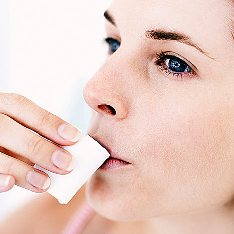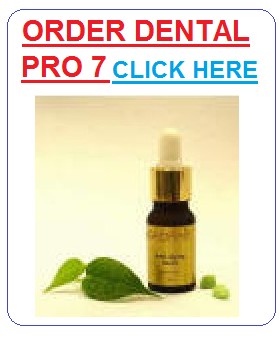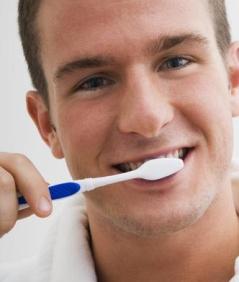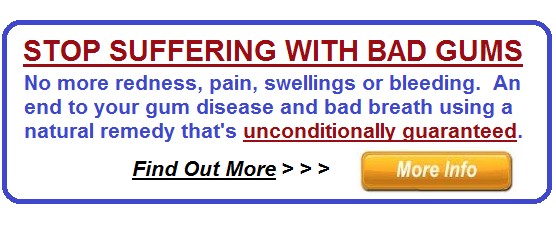“Mouthwash Leaves Your Mouth Feeling Fresh and ‘Zingy’ But There Are Some Genuine Long-Term Health and Safety Concerns About the Commercial Mouthwash That Sits Next To Your Toothpaste”
After brushing your teeth you reach for the Mouthwash but could you be storing health problems for your future?

Is Mouthwash Harmful ?
It’s Only Mouthwash . . .
The drugstore stocks many products which promise to cure Bad Breath and Gum Disease. We hand over our money and hope for some good results , but oftentimes regretably the advertising hype doesn’t match the end result. Many products give some very temporary relief, and in some cases actually make things worse.
. . . But There’s a Downside
Mouthwash is a good example of a popular product with great TV advertising using nice vague words like ‘clean’, ‘fresh’ and ‘minty’. The smart but deliberately deceptive messages suggest that your breath will be freshened by daily use of these products.
However, a quick look at the chemical cocktail that goes into the modern mouthwash sitting in your bathroom, might convince you that these products have a serious downside.
Your Mouthwash Is the Bacteria’s Friend
Although you might get a sudden ‘fresh’ feeling after swilling your mouth – your mouthwash could very easily become one of the causes of your bad breath and gum disease.
The human mouth is home to large quantities of harmful bacteria that multiply rapidly. The bacteria are the chief cause of Bad Breath and the sole cause of Gum Disease. If you repeatedly try to destroy bacteria using a strong chemical anti-bacterial mouthwash, you will be increasing the probability of developing resistant strains of bacteria!
You might think about switching to 100% natural toothpaste and mouthwash replacement products that will rapidly clear up your Bad Breath and Gum Disease by destroying the bacteria – but more about that in a minute.
![]()
These Are the Chemicals In Your Mouthwash
When dentists recommend Gum Disease sufferers increase their use of mouthwash, you could be forgiven for asking if they actually know what’s in this stuff.
Typical active ingredients (not a full list) in your regular branded mouthwash:
Thymol (2-isopropyl-5-methylphenol)
is used to control varroa mites and prevent fermentation and the growth of mold in bee colonies as well as playing a part in rebinding old books where it is ised to control mold. Thymol is also used to treat Ringworm infections and hookworm. It is also used as a preservative in anesthetic and as an antiseptic in mouthwash. It has also been added to cigarettes to relax the trachea and smooth the inhalation of smoke.
Potential for Harm – Thymol is dangerous to the environment and toxic to aquatic organisms and may cause long-term adverse effects in the aquatic environment. It is also being investigated as a mutagen
Eucalyptol
is added chiefly for its spicy aroma and taste.
Potential for Harm – In higher than normal doses eucalyptol is hazardous when taken internally or when inhaled. It can have acute health effects on behaviour and the respiratory tract as well as the nervous system. It is generall recognized as being a reproductive toxin for both males and females.
Hexetidine (Oraldene)
is an anti-bacterial and anti-fungal drug used in some popularmouthwash products.
Potential for Harm – Too much of this drug taken internally leads to severe chronic conditions such as clotting in the principal part of the brain which integrates complex sensory and neural functions. This causes these functions to fail.
Other potential; problems from an overdose of Hexetidine include allergic reactions and unstable heartbeats, It is not advisable to take Hexetidine when pregnant or when breastfeeding. Hexetidine is considered to be carcinogenic.
Methyl Salicylate
is rubefacient (that is – a substance for external use that causes dilation of the capillaries and an increase in blood circulation) It is also used as a flavoring agent and adds fragrance to some products. It also works as an odor masking agent for certain organophosphate pesticides.
Potential for Harm – In its pure state, methyl salicylate is toxic. This is especially true when taken internally. A teaspoon of methyl salicylate contains roughly 7g of salicylate, which is the equivalent of over twenty-three 300 mg aspirin tablets. The smallest lethal dose for an adult is 101 mg/kg body weight.
Methyl Salicylate has proved fatal for small children with doses as small as 4 mL. A 17 year-old athlete from Staten Island died after her body absorbed fatal levels of methyl salicylate through her skin after using topical muscle-pain relief products containing the drug.
Benzalkonium chloride
(also known as alkyldimethylbenzylammonium chloride and ADBAC) has many in industrial uses from a disinfectant in mouthwash to microbial corrosion inhibition in oilfields.
Potential for Harm – Benzalkonium chloride is an allergen. There are ongoing concerns that its repeated use may have some (as yet undiscovered) side effects in medical and hygiene products. However, studies have already shown that its use in contact lens solutions over time can cause irreversible damage to the eye evidenced by punctures of the corneal epithelium.
Benzalkonium chloride is highly toxic to fish – very highly toxic to aquatic invertebrates, moderately toxic to birds. A solution of 10% or more is toxic to humans, causing irritation to the skin and mucosa, and death if taken internally.
Cetylpyridinium Chloride
mouth rinse/spray is still considered by manufacturers to be one of the best chemical preventatives of plaque formation. It is thought to be a suitable aid for preventing gingivitis.
Potential for Harm – This chemical unfortunately causes extrinsic tooth staining. It also has an unpleasant taste and can adversely affect the taste of food and drink, It is also responsible for causing sensitivity, irritation and pain in the tongue due to its high alcohol content.
A study in 1998 actually shows this chemical was responsible for an increase in plaque build-up rather than the decrease claimed.
Methylparaben
is an anti-fungal chemical preservative added to products ranging from mouthwash to hair gels to extend shelf-life for the benefit of the drugstore owner. Methylparaben preservative is often added to carpules of the local anesthetic that your dentist might use.
Potential for Harm – Methylparaben has been considered as non-toxic for many years and it’s use is widespread as a p[roduct preservative. However recent tests indicate skin irritation and contact dermatitis and Rosacea occur in individuals with paraben allergies.
More worrying is the discovery (in several studies) that report the joint presence of parabens and breast cancer in women. One UK-based study detected high levels of parabens in breast tumors in eighteen out of twenty samples tested. Although inconclusive, this is a serious question mark hanging over this common mouthwash ingredient.
Hydrogen Peroxide
is a chemical bleach. It is routinely added to mouthwash and toothpaste that is formulated and advertised to have a bleaching effect on teeth.
Potential for Harm – Hydrogen Peroxide is listed as being highly dangerous and injurious to health for workers handling this chemical. Danger comes from its vapor as well as through swallowing or skin contact. Obviously the amounts contained in oral products are controlled; however, there are always doubts and concerns when long-term use of toxic chemicals and the potential for the accumulation of harm may be an issue.
Alcohol
Added to many mouthwash products for no other reason than it gives you a “zing” sensation in your mouth and the false impression that something good is happening.
Potential for Harm – There are a number of possible outcomes to swilling your mouth twice a day with up to 27% alcohol solution:
Because alcohol is a drying agent, it can reduce saliva and add to bad breath problems.
More importantly – a report published in the Dental Journal of Australia concluded there is “sufficient evidence “that “alcohol-containing mouthwashes contribute to the increased risk of development of oral cancer”. This report has been discussed and debated by responsible sections of the media and is being actively investigated by Government health departments across the world, all very interested to get some clarity on this important discovery.
What Do the Mouthwash Manufacturers Say?
Manufacturers say doses of chemicals and drugs are well within acceptable limits laid down by the regulatory authorities.
Well – they would say that – wouldn’t they.
However, nobody knows what personal damage would be caused to you and your family by long-term exposure to these substances.
And . . .
Can you completely trust systems are fool-proof so an overdose will never occur when we hear daily of products being recalled and withdrawn through faulty manufacture?
Dental Pro 7 Is the 100% Natural Option for Your Family
Stop using oral products with dubious and potentially harmful ingredients and replace them all with Dental Pro 7 which contains nothing man-made or artificial.
Dental Pro 7 can do all this:
- Replace both your regular toothpaste and your mouthwash.
- Destroy your oral bacteria day and night.
- Bring an end to your gum disease.
- Clean your teeth better than toothpaste ever can.
- Significantly reduce your plaque.
- Save you money by reducing dental visits.
- Stop your bad breath from day one.
- Give you fresh healthy breath (Great for relationships!)
- Allow your damaged gums to fully heal and become pink again.
Dental Pro 7 management are so confident their product will work for you they offer you a Full Unconditional Money-Back Guarantee.
Chances are you’re still using a proprietary brand of toothpaste you buy automatically year after year.
I recommend ou change to Dental Pro 7 and banish your Gum Disease and Bad Breath once and for all.
Go to the Dental Pro 7 website to learn more – read customer testimonials – and place your order by clicking here > > > Dental Pro 7 Website
I wish you great health.
![]()






